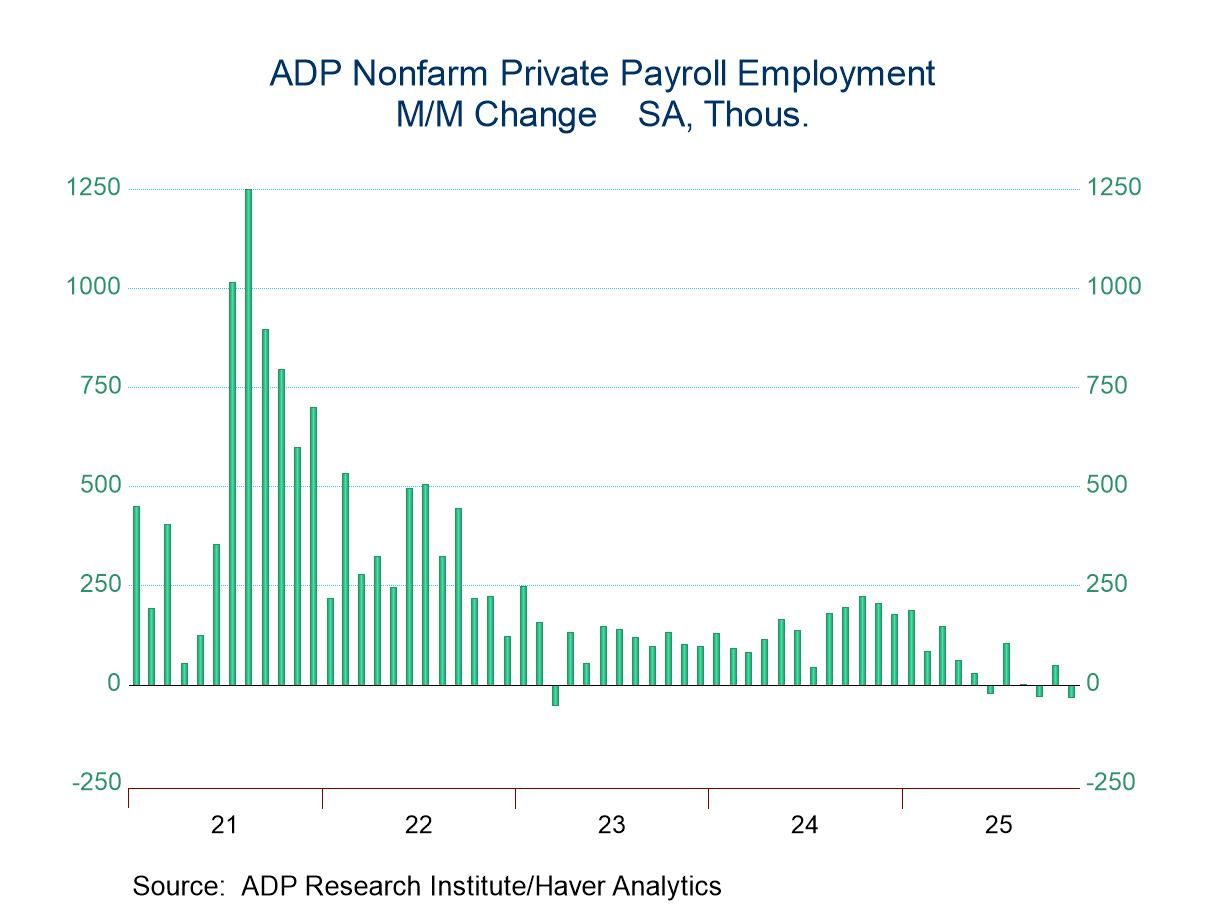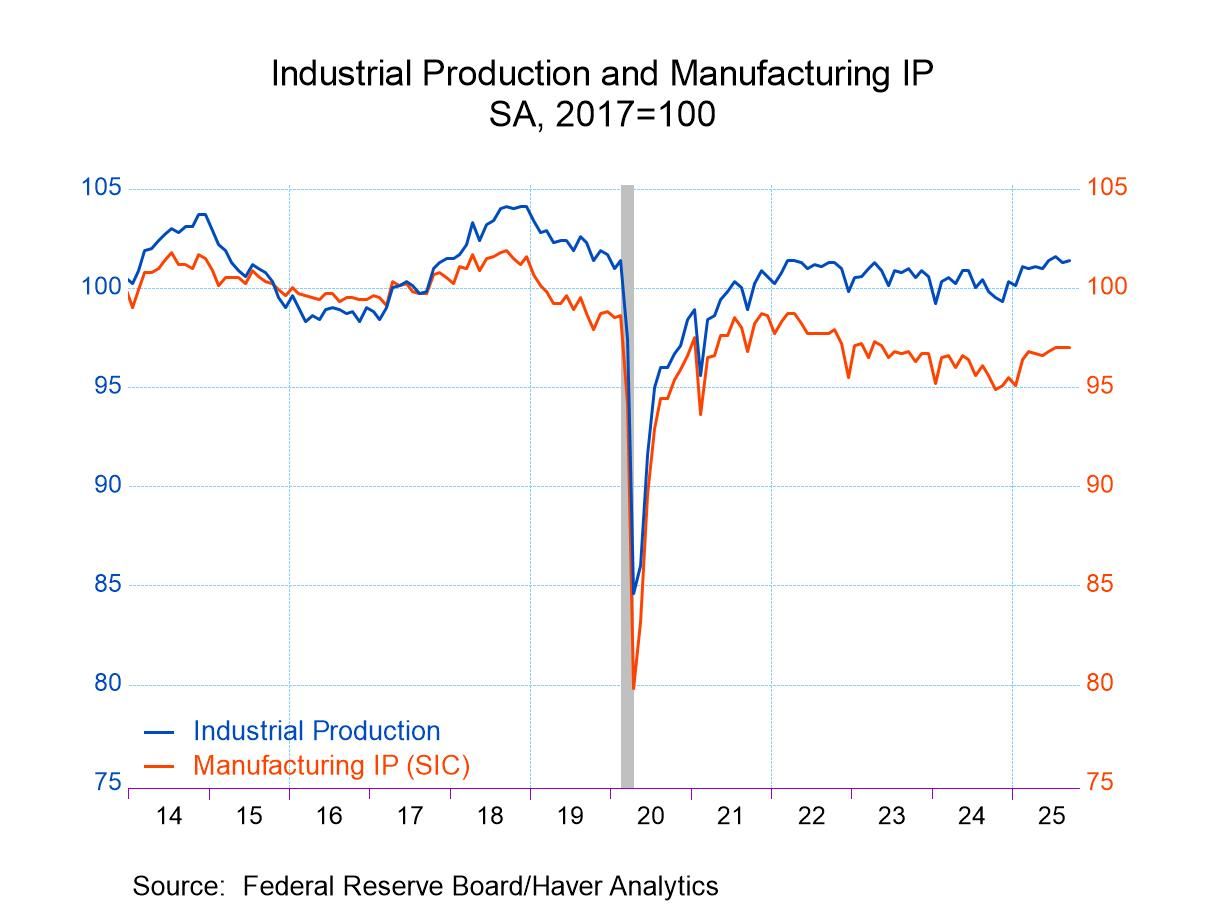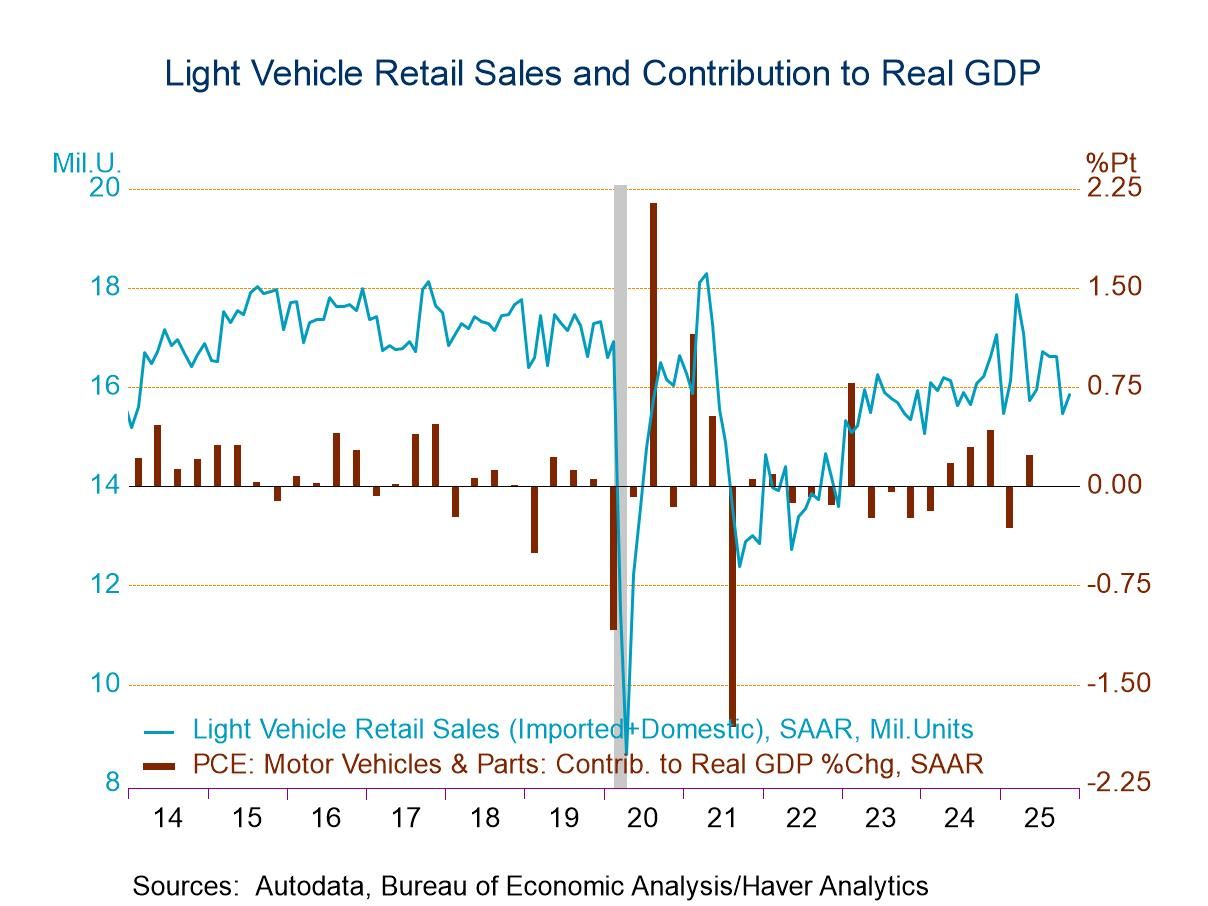U.S. Goods Trade Deficit Narrows in April; Smallest Shortfall Since December ’23
Summary
- Deficit: $87.6 bil. in April, down $74.6 bil. from a record $162.3 bil. in March.
- Exports up 3.4%, the largest of four straight m/m gains, led by a 15.5% jump in exports of industrial supplies & materials.
- Imports, down in all end-use categories, slump 19.8%, the deepest m/m fall since Feb. 1975, led by a 32.3% plunge in nonauto consumer goods imports.


The advance estimate of the U.S. international trade deficit in goods narrowed more than expected to $87.62 billion in April after widening to a record $162.25 billion in March, data from the U.S. Census Bureau showed. The April reading was the smallest goods trade deficit since December 2023 and smaller than a $97.04 billion shortfall in April 2024. A deficit of $141.5 billion for April had been expected by the Action Economics Forecast Survey. In Q1'25, the goods trade deficit ballooned to a record $464.82 billion after rising to $324.23 billion in Q4'24; the monthly deficit averaged $154.94 billion in Q1'25, the biggest on record, up from an average of $108.08 billion in Q4'24. In real terms, the goods trade deficit subtracted a record 4.64%-point from real GDP growth in Q1'25 after having added 0.24%-point in Q4'24.
Total goods exports rose 3.4% m/m (9.6% y/y), the biggest of four consecutive monthly rises, to a record $188.47 billion in April, on top of a 2.3% increase in March. Exports had risen 4.0% since a July 2022 high. The rise in exports in April reflected exports m/m gains of 15.5% (22.7% y/y) in industrial supplies & materials, 10.1% (8.8% y/y) in other goods, and 1.7% (12.5% y/y) in capital goods excluding autos. To the downside, exports for the following end-use categories fell m/m in April: automotive vehicles & parts (-21.6%; -18.9% y/y), nonfood consumer goods excluding autos (-7.4%; -8.4% y/y), and foods, feeds & beverages (-4.0%; +0.3% y/y).
Total goods imports slumped 19.8% m/m (+2.6% y/y), the deepest monthly decrease since February 1975, to $276.10 billion in April, the lowest level since October, following a 5.7% rebound to a record $344.47 billion in March. Imports had fallen 4.5% since a March 2022 high. The slump in imports in April reflected m/m drops in all imports end-use categories, particularly two-digit m/m plunges of 32.3% (+5.4% y/y) in nonfood consumer goods excluding autos, 31.1% (-5.9% y/y) in industrial supplies & materials, and 19.1% (-18.9% y/y) in automotive vehicles & parts. One-digit m/m declines included those for foods, feeds & beverages (-4.4%; +6.2% y/y), capital goods excluding autos (-3.1%; +16.3% y/y), and other goods (-0.6%; +8.1% y/y).
The advance international trade data can be found in Haver's USECON database. The expectation figure is from the Action Economics Forecast Survey, which is in AS1REPNA.
Winnie Tapasanun
AuthorMore in Author Profile »Winnie Tapasanun has been working for Haver Analytics since 2013. She has 20+ years of working in the financial services industry. As Vice President and Economic Analyst at Globicus International, Inc., a New York-based company specializing in macroeconomics and financial markets, Winnie oversaw the company’s business operations, managed financial and economic data, and wrote daily reports on macroeconomics and financial markets. Prior to working at Globicus, she was Investment Promotion Officer at the New York Office of the Thailand Board of Investment (BOI) where she wrote monthly reports on the U.S. economic outlook, wrote reports on the outlook of key U.S. industries, and assisted investors on doing business and investment in Thailand. Prior to joining the BOI, she was Adjunct Professor teaching International Political Economy/International Relations at the City College of New York. Prior to her teaching experience at the CCNY, Winnie successfully completed internships at the United Nations. Winnie holds an MA Degree from Long Island University, New York. She also did graduate studies at Columbia University in the City of New York and doctoral requirements at the Graduate Center of the City University of New York. Her areas of specialization are international political economy, macroeconomics, financial markets, political economy, international relations, and business development/business strategy. Her regional specialization includes, but not limited to, Southeast Asia and East Asia. Winnie is bilingual in English and Thai with competency in French. She loves to travel (~30 countries) to better understand each country’s unique economy, fascinating culture and people as well as the global economy as a whole.






